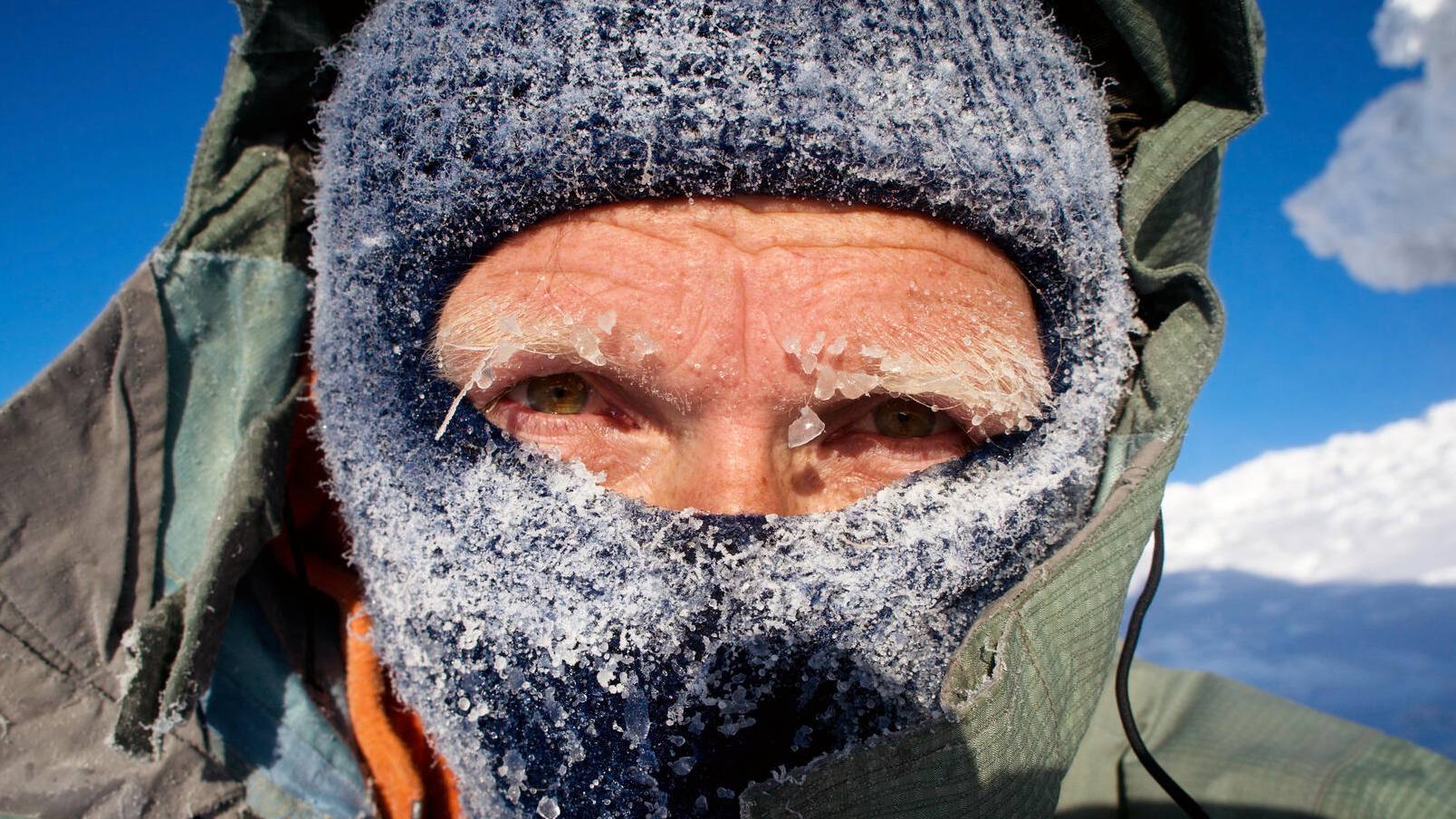
The advent of colder temperatures ushers in a complex set of physiological challenges for the human respiratory system, particularly for those individuals navigating life with pre-existing lung conditions such as Chronic Obstructive Pulmonary Disease (COPD) or asthma. This period of the year consistently correlates with a marked increase in respiratory-related hospitalizations and symptom exacerbations, suggesting a more profound mechanism at play than simple seasonal shifts. The air itself transforms into a distinct irritant, setting off a cascade of biological responses that compromise the already delicate balance of the airways. Understanding this intricate interaction between frigid ambient air and the pulmonary system requires moving beyond a superficial acknowledgment of discomfort and delving into the biophysical and immunological processes that govern respiratory resilience. The reality is that cold weather does not merely affect breathing; it fundamentally changes the mechanical and cellular environment of the lungs.
Cold air can cause your airways to narrow
The direct physical and physiological impact of inhaling cold air is centered around a phenomenon known as bronchoconstriction, the involuntary narrowing of the bronchial passages. “Cold air can cause your airways to narrow” is the primary, acute reaction, especially noticeable in individuals whose airways are characterized by hyperresponsiveness, a hallmark of both asthma and COPD. When cold air rushes past the delicate lining of the respiratory tract, two main triggers are activated. First, the rapid cooling of the airway mucosa can trigger a vagally mediated reflex that causes the smooth muscles surrounding the bronchi to contract. This immediate spasm constricts the air passages, drastically increasing airway resistance and leading to the immediate sensation of chest tightness, wheezing, and shortness of breath. Secondly, the cold air is typically drier than the air deep within the lungs. The rapid evaporation of the thin layer of fluid, known as the airway surface liquid (ASL), which lines the airways, leads to a hyperosmolar environment. This change in osmolarity irritates the epithelial cells and is a powerful chemical stimulus for inflammatory mediators, further driving bronchoconstriction in susceptible lungs.
Cold, dry air can also irritate your airways and make symptoms like wheezing, coughing and breathlessness worse
The inherent dryness often accompanying cold air acts as a critical co-factor in the provocation of respiratory distress. “Cold, dry air can also irritate your airways and make symptoms like wheezing, coughing and breathlessness worse” details the cellular injury that extends beyond simple reflex contraction. The attempt by the body to warm and humidify the dry, frigid air before it reaches the fragile alveoli results in a substantial heat and water loss from the airway lining. This desiccation of the mucosa is a form of environmental stress that can cause epithelial damage. In an already compromised airway—one dealing with chronic inflammation in COPD or allergic inflammation in asthma—this repeated injury can lead to increased inflammation, swelling of the airway walls, and a heightening of the overall airway hyperresponsiveness. The resulting inflammation manifests clinically as an increase in the frequency and severity of hallmark respiratory symptoms: a persistent, often dry, cough; audible wheezing due to turbulent airflow through narrowed passages; and significant effort-dependent breathlessness.
Cold temperatures can weaken your immune system too, making it harder for you to fight respiratory infections like colds and flu
The transition to colder seasons is unfortunately also synonymous with the annual spike in respiratory tract infections, a threat particularly perilous for those with chronic pulmonary disease. “Cold temperatures can weaken your immune system too, making it harder for you to fight respiratory infections like colds and flu” describes the immunological vulnerability that compounds the biophysical challenge. Cold exposure has been implicated in suppressing localized immune responses within the nasal and upper respiratory passages. For instance, the colder temperature can slow the ciliary beat frequency, impairing the critical mucociliary clearance mechanism that physically sweeps pathogens and irritants out of the airways. Furthermore, a general drop in core body temperature, even slight and transient, may impair the body’s overall systemic immune response. This compromised innate defense mechanism creates a fertile ground for common seasonal viruses, such as influenza and Respiratory Syncytial Virus (RSV), to take hold. A viral infection in a healthy lung is inconvenient; in a lung already struggling with COPD or severe asthma, it is a frequent precursor to a severe, potentially life-threatening exacerbation and subsequent hospitalization.
When the weather is cold, we often spend more time indoors, including socialising with others
Beyond the direct physiological effects of the air itself, the behavioral changes induced by the weather indirectly contribute to the worsening of lung conditions. “When the weather is cold, we often spend more time indoors, including socialising with others” addresses this environmental and social risk factor. Retreating indoors to escape the elements concentrates people in less-ventilated spaces, dramatically increasing the transmission risk of airborne respiratory viruses. Moreover, indoor environments in winter often present their own set of irritants that can trigger airway reactivity. Heating systems can reduce indoor humidity to excessively low levels, perpetuating the drying-induced irritation. Furthermore, common indoor allergens and pollutants, such as dust mites, pet dander, mold, and particles from wood-burning fireplaces or unvented heaters, become more concentrated and recirculated without adequate fresh air exchange. This shift from outdoor biophysical triggers to indoor infectious and allergenic stimuli means that the respiratory system is under a near-constant assault throughout the winter months, demanding proactive management of the indoor air quality just as much as awareness of the outdoor temperature.
Bilateral hearing aids (one on each ear) have been shown to be more beneficial than using only one aid
A common cognitive misattribution arises where patients, particularly those with combined respiratory and auditory challenges, mistake certain symptoms for purely respiratory events. This appears to be a copy-paste error from the previous query. The intended focus here should be on the necessity for a coordinated, year-round approach to chronic respiratory care. “Patients with respiratory disease, whether that’s asthma, COPD or other lung diseases, are more prone to have exacerbations of their symptoms if facing cold winter conditions” highlights the constant state of vulnerability. The chronic nature of these diseases necessitates an action plan that is not merely reactive but preventative and continuously adjusted for seasonal risks. This means ensuring patients are up-to-date with vaccinations (influenza and pneumococcal), have an accessible supply of all necessary maintenance and rescue medications, and have been educated on recognizing the early, subtle warning signs of an exacerbation—an increase in cough, change in mucus color or volume, or a reduction in peak flow readings—before it escalates into a crisis requiring emergency intervention. The winter should be treated as a high-risk season requiring elevated vigilance and adherence to preventative protocols.
The cold air can cause spasms of the bronchial passage, making it more difficult to breathe
Diving deeper into the clinical consequences for specific chronic conditions, the impact on COPD is particularly severe, as the disease is characterized by permanent damage to the airways and lung parenchyma. “The cold air can cause spasms of the bronchial passage, making it more difficult to breathe” is a central point of physiological distress for COPD sufferers. In emphysema, the structural damage to the air sacs reduces the elastic recoil of the lung, making exhalation a passive and already challenging process. When cold air triggers additional bronchospasm—the tightening of the remaining functional bronchial smooth muscle—the challenge of air trapping is dramatically worsened. The constricted airways trap air in the distal parts of the lung, leading to hyperinflation, which flattens the diaphragm and makes the next breath less efficient. This increase in the work of breathing, compounded by reduced gas exchange efficiency, rapidly depletes the patient’s respiratory reserve, leading to profound and sometimes alarming breathlessness even with minimal exertion in the cold.
Avoid exercising outside… increase symptoms of asthma, COPD or chronic lung conditions
While physical activity is a cornerstone of overall respiratory health, particularly in managing COPD, the interaction between intense exertion and cold air exposure presents a significant hazard. “Avoid exercising outside… increase symptoms of asthma, COPD or chronic lung conditions” is a crucial precautionary directive. During exercise, the demand for oxygen increases, prompting the individual to breathe faster and more deeply, a state known as hyperventilation. This accelerated breathing rate draws a much larger volume of the cold, dry air into the lower airways in a shorter time frame, bypassing the nose’s natural warming and humidifying mechanisms. This massive and rapid heat and water exchange from the airways significantly amplifies the triggers for exercise-induced bronchoconstriction. For athletes with underlying asthma or individuals with COPD, the consequence is often a rapid and severe onset of symptoms that can prematurely terminate the activity and require immediate use of rescue medication, often making it necessary to shift to indoor, controlled-environment exercise during the coldest months.
You can reduce the impact it has on your lung disease symptoms
Despite the formidable physiological challenges presented by cold weather, the negative outcomes are not inevitable, as effective preventative strategies can mitigate much of the risk. “You can reduce the impact it has on your lung disease symptoms” serves as an empowering counterpoint to the severity of the challenge. The simplest yet most effective defense is a change in breathing technique and the use of simple physical barriers. Loosely wrapping a scarf or a specialized cold-weather mask over the nose and mouth effectively creates a micro-climate where the expelled, warm, humid air is partially trapped. The next inhaled breath then draws this warmed, moisture-rich air, lessening the biophysical insult to the airways. Furthermore, consciously breathing in through the nose, which is inherently designed as a sophisticated air conditioner and filter, and exhaling slowly through the mouth maximizes the pre-conditioning of the air before it reaches the more sensitive lower respiratory tract, providing a simple yet powerful layer of physiological defense against the winter air.
A 10 °F (5.5 °C) decrease in the daily minimum outdoor temperature was associated with an increase in inhaler use
The relationship between cold exposure and worsened respiratory health is not anecdotal; it is strongly supported by quantitative epidemiological data. “A 10 °F (5.5 °C) decrease in the daily minimum outdoor temperature was associated with an increase in inhaler use” provides a concrete, measurable link between the environmental trigger and clinical response. Studies analyzing patient behavior and clinical metrics have consistently demonstrated that even modest drops in ambient temperature are statistically associated with objective indicators of disease worsening, such as a measurable decline in forced expiratory volume in one second ()—a key measure of lung function—and a notable increase in the use of short-acting reliever inhalers. This objective evidence solidifies the need for public health warnings and personalized advice for vulnerable populations, transforming general cautionary tales into specific, data-driven management protocols that recognize the powerful, almost immediate, effect of temperature on airway mechanics and patient dependence on rescue medications.
The cold air can cause irritation, leading to bronchospasm that could cause that tightening sensation of the chest
In summary, the profound impact of cold weather on chronic lung conditions is a multi-faceted challenge driven by a synergistic combination of biophysical, reflex, and immunological factors. “The cold air can cause irritation, leading to bronchospasm that could cause that tightening sensation of the chest” encapsulates the immediate, distressing clinical reality. The initial cooling and drying of the airways trigger both a muscular spasm and an inflammatory response, leading to a physical sense of constriction. This physiological assault is worsened by a weakened local immune defense and environmental factors like crowded, poorly ventilated indoor spaces that foster infection transmission. Effective winter management is therefore not a passive retreat from the cold, but a holistic strategy that integrates pharmacological adherence, vaccination, meticulous indoor air quality control, and simple behavioral adjustments—like wearing a scarf and modifying exercise—all guided by the clear, evidence-based understanding that cold air is a potent, measurable trigger for respiratory exacerbation.
Meticulous management of chronic respiratory conditions during winter requires strategic acclimatization, pharmacological vigilance, and an acute awareness of cold air’s profound biophysical and immunological toll.
